Pourcentage De Voiture Électrique En France
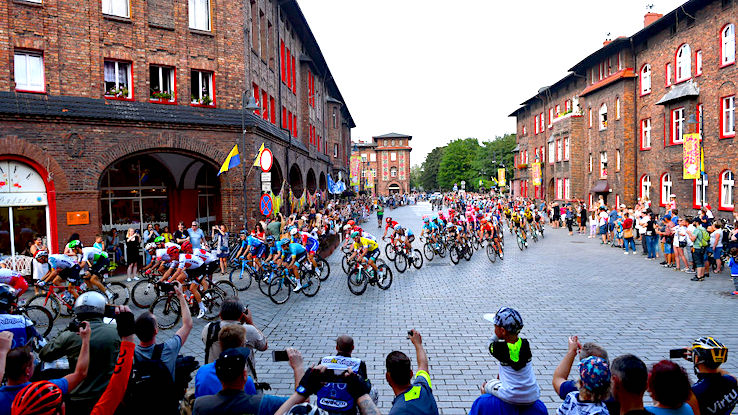
Lasting virtually three weeks and involving several hundred competitors, the Tour de France is one of the biggest sporting events beyond the earth — and in the earth of cycling, it'southward definitely the biggest. This much-anticipated annual race faced some setbacks during the COVID-19 pandemic, and while the world hasn't returned to normal all the same, devoted cycling fans (and those of the states who simply love edge-of-our-seats competition) are eager for the big return slated for this summer.
In honor of the Tour de France's chiliad 2021 re-entry to the sporting universe on Saturday, June 26, nosotros're taking a look at some fun facts that'll go your anticipation building even more. Plus, yous'll observe where and how you can sentinel every minute of the race from the comfort of home — no cleats or helmet necessary.
Thousands of People Are Involved
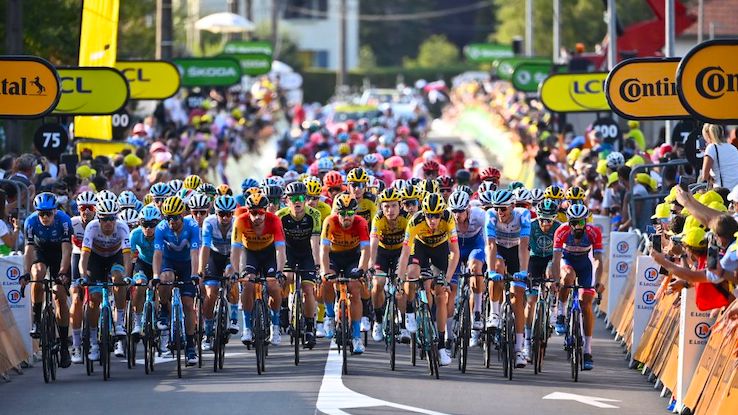
You might already know that a bevy of bicyclists participate in the race — 198 riders spread across 22 different teams compete each year. But the number of people involved in ensuring the race goes off without a hitch is much higher than the number of athletes participating. Organizers have logistics to the next level with team staff members, members of the race jury, thousands of security professionals and members of the media. If you include the spectators in that count, the numbers — pre-pandemic, at least — tin run into the millions. From city to city along the race route, hundreds upon hundreds of people follow the activeness throughout the course of the event. And organizers and support staff keep things running smoothly to the finish line.
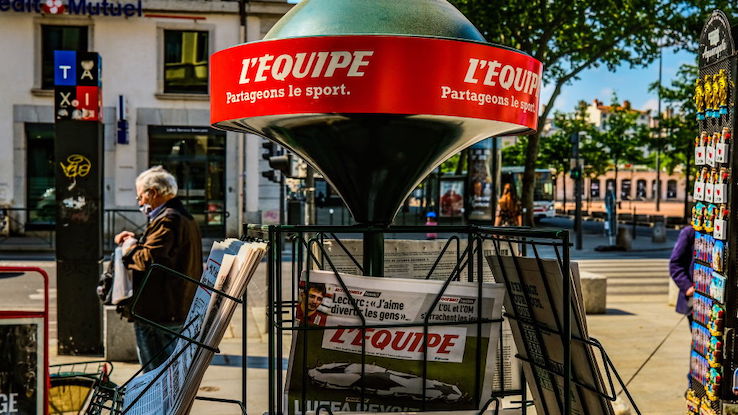
The first Tour de France wasn't held considering a bunch of bicycling fans got together and thought information technology'd be a great idea to beginning a competition — at least not totally. It was actually a promotional issue hosted with the intention of bringing more than publicity to L'Car, a French newspaper that focused on reporting details almost different sporting events. Although Fifty'Auto has since closed down, the parent company of its replacement,L'Equipe, continues to organize the Bout de France today.
It'south Not Just Big, only Also Long
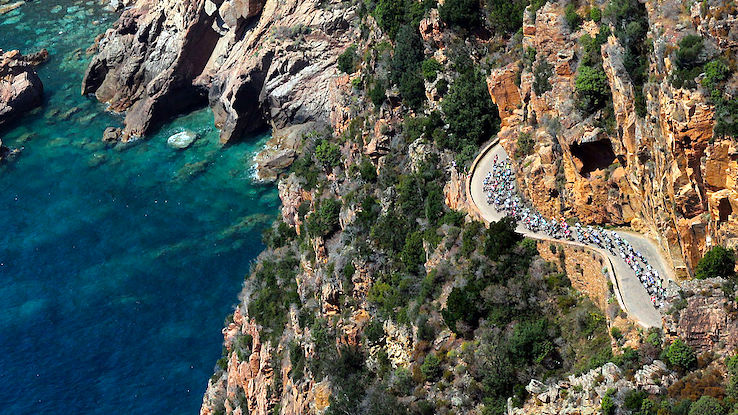
And it'due south long in multiple ways, as well. The race itself takes place over the class of nearly a calendar month, with 21 different day-long segments making up the bulk of the competition. The length of the course is likewise all-encompassing, even so; it'southward typically over 2,000 miles long and can pass through multiple neighboring countries. Information technology wasn't fifty-fifty always this brusk, either — in 1926, the grade encompassed a winding 3,570 miles and took a total month for riders to cease.
Different Jerseys Hateful Different Things
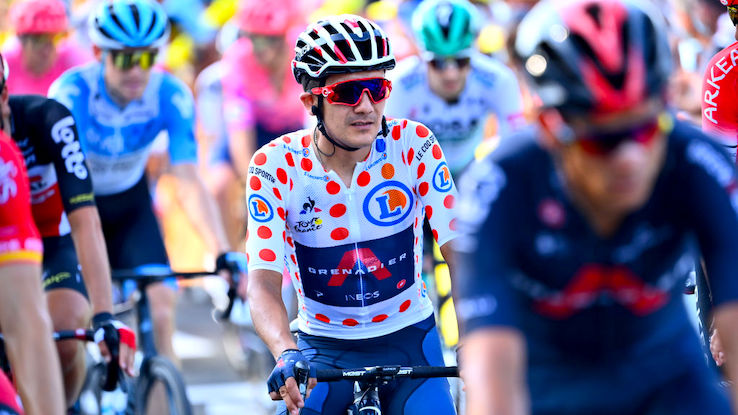
As yous sentinel the race, you'll notice cyclists wearing the vivid kits and bibs that represent their teams — but yous'll also spot some even more unique colors and designs amongst the pack. One of these is a yellow jersey, chosen the "maillot jaune," that's bestowed upon the racer who had the everyman cumulative ride time for the day. Other special jerseys include the green "maillot vert," which is awarded to the rider with the about points, and the "maillot a pois" — a red and white polka-dotted jersey given to the cyclist who earns the most points during the areas of the course that take steep inclines to climb. The rider who wears the maillot a pois is affectionately known as "the king of the mountain."
There Was Almost Only One Bout de France
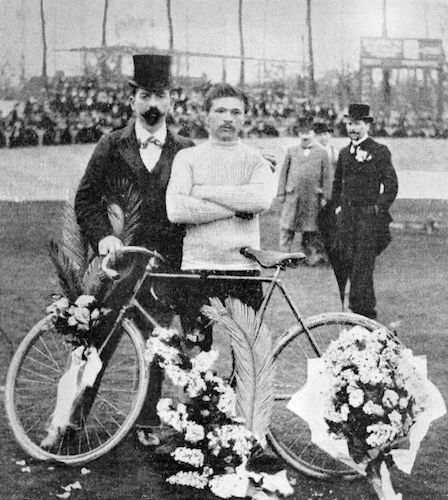
The first Tour de France took place in 1903 – and that was almost the 1 and but iteration of the race. That's because newspaper editor Henri Desgrange, who helped organize the initial tour, was so aghast at the conduct non only of the fans but also of the competitors in the 1903 race that he wanted to discontinue information technology despite its clear appeal. Bouncy crowds turned vehement, with spectators assaulting racers equally they passed along the course. The riders themselves constitute numerous ways to cheat, disqualifying themselves in the process. But the Bout de France was so lauded — and it increased apportionment of L'Auto and so extensively — that the organizers had no choice but to keep hosting the consequence.
The Race Has Its Own Language
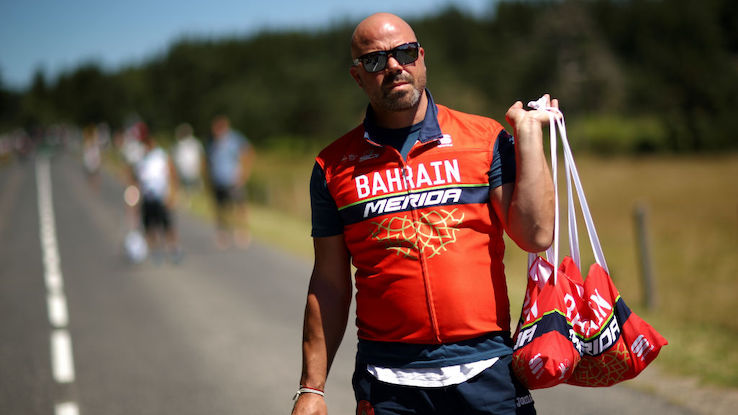
Bonking, anyone? As you lot're watching the Tour de France, y'all might hear commentators apply some curious turns of phrase — and many of them will exist unique to the race itself. Heave your bicycling know-how by learning what these terms mean before communicable 1 of the race segments:
- Bonking: Cyclists don't desire to "bonk" during this race; information technology means they've run out of energy and are as well wiped to continue.
- Peloton: No, it's non the fancy exercise bike y'all bought during the pandemic. In Bout de France context, a peloton is the main group of riders where most of the participants are cycling together.
- Sag Wagon: If someone bonks, they may need the assistance of the sag wagon. This is a automobile that follows the pack of cyclists and picks up those who become as well fatigued or injured to go on riding.
- Musket Bag: While information technology may sound like something you'd notice at a Civil War battleground, a musket pocketbook is sort of similar a bagged lunch — but it'southward packed with free energy gels, water, sandwiches and other fuel for the cyclists. It's also chosen a "musette" or, sometimes, a "bonk bag."
- Lanterne Rouge: In French, this term ways "blood-red light," and it refers to the cyclist who's in the very terminal place in the race. Being in this position gets riders ample attention, and those who know they won't win sometimes compete for this stardom instead.
Yous Can Watch the Activeness at Dwelling — Here's How

Now that the race has returned to regularly scheduled programming in 2021 following its 2020 pandemic postponement, you might exist eager to catch the three-calendar week racing saga unfold from the condolement of home. Fortunately, you have the convenient option to stream the tour live on both NBC Sports and NBC's Peacock streaming service.
The race coverage on Peacock is just available through Peacock Premium, a paid tier of the service that costs $4.99 — a worthwhile investment if you're a serious cycling fan who can't look to watch this K Bout. NBC Sports is attainable if you're already paying for regular cable, simply without that subscription you won't be able to stream the program online or watch it on TV unless y'all spring for Peacock.
Go on in mind that, if you're non already a Peacock subscriber, you lot'll receive a free weeklong trial to amend help you lot make up one's mind if the service is right for y'all. You can use that to take hold of up on the race and decide if you want to make the month-long (or longer) investment.
Source: https://www.ask.com/lifestyle/facts-tour-de-france?utm_content=params%3Ao%3D740004%26ad%3DdirN%26qo%3DserpIndex&ueid=61d6b903-2501-4e1b-be29-55f0977742c7
Posted by: lindermereass.blogspot.com

0 Response to "Pourcentage De Voiture Électrique En France"
Post a Comment